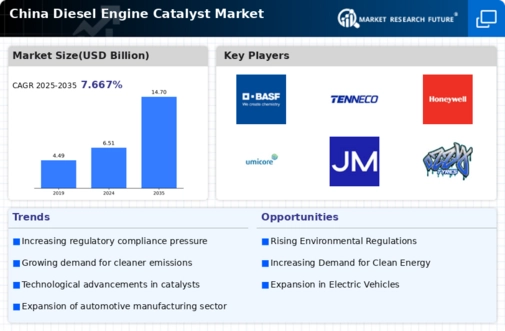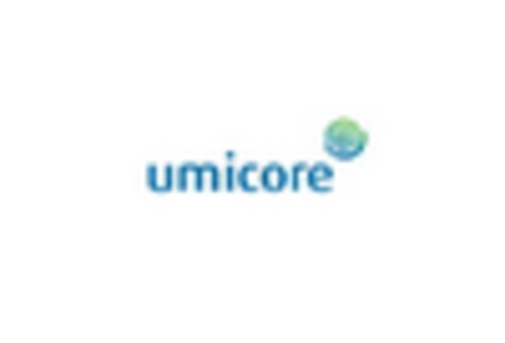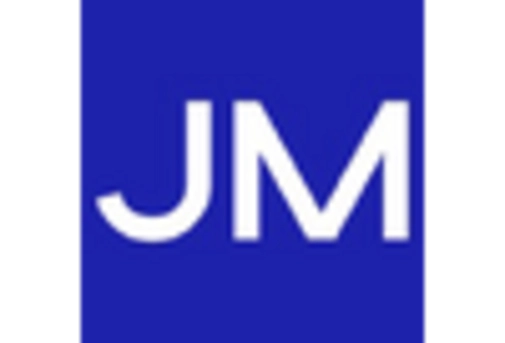The diesel engine catalyst market in China is characterized by a competitive landscape that is increasingly shaped by innovation, regulatory pressures, and a growing emphasis on sustainability. Key players such as BASF (DE), Johnson Matthey (GB), and Yuchai Group (CN) are actively pursuing strategies that enhance their market positioning. BASF (DE) focuses on developing advanced catalyst technologies that meet stringent emission regulations, while Johnson Matthey (GB) emphasizes partnerships with automotive manufacturers to integrate their catalysts into new engine designs. Yuchai Group (CN), leveraging its local market knowledge, aims to expand its production capabilities to cater to the rising demand for cleaner diesel technologies. Collectively, these strategies indicate a shift towards more environmentally friendly solutions, which is reshaping the competitive dynamics of the market.
In terms of business tactics, companies are increasingly localizing manufacturing to reduce costs and enhance supply chain efficiency. This approach is particularly evident in the moderately fragmented structure of the market, where both multinational corporations and local players vie for market share. The collective influence of these key players is significant, as they not only drive technological advancements but also set industry standards that smaller competitors must follow.
In November 2025, BASF (DE) announced the launch of a new line of catalysts specifically designed for heavy-duty diesel engines, aimed at reducing NOx emissions by up to 30%. This strategic move is crucial as it aligns with China's stringent environmental regulations and positions BASF (DE) as a leader in the development of sustainable solutions. The introduction of these catalysts is expected to enhance the company's competitive edge in a market that is increasingly prioritizing emissions reduction.
In October 2025, Johnson Matthey (GB) entered into a strategic partnership with a leading Chinese automotive manufacturer to co-develop next-generation diesel engines equipped with advanced catalyst systems. This collaboration is significant as it not only strengthens Johnson Matthey's (GB) foothold in the Chinese market but also facilitates the integration of innovative technologies that could redefine diesel engine performance. Such partnerships are indicative of a broader trend where collaboration is becoming essential for driving innovation in the sector.
In December 2025, Yuchai Group (CN) unveiled plans to invest $50 million in expanding its catalyst production facilities in response to increasing domestic demand. This investment reflects Yuchai's commitment to enhancing its manufacturing capabilities and underscores the importance of local production in meeting market needs. By bolstering its production capacity, Yuchai Group (CN) aims to solidify its position as a key player in the diesel engine catalyst market.
As of December 2025, the competitive trends in the diesel engine catalyst market are increasingly defined by digitalization, sustainability, and the integration of AI technologies. Strategic alliances are playing a pivotal role in shaping the current landscape, enabling companies to leverage shared expertise and resources. Looking ahead, it appears that competitive differentiation will evolve from traditional price-based competition to a focus on innovation, technological advancements, and supply chain reliability. This shift suggests that companies that prioritize R&D and sustainable practices are likely to emerge as leaders in the market.




















Leave a Comment